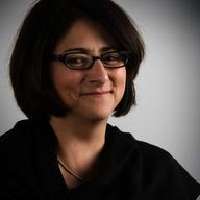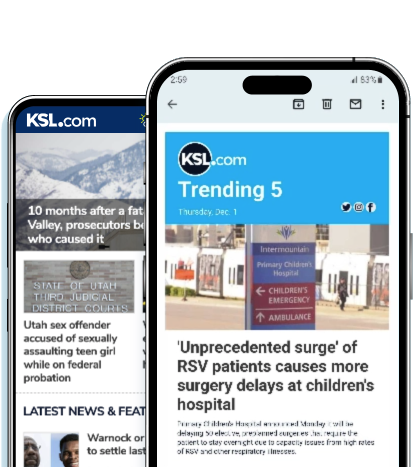Estimated read time: 5-6 minutes
This archived news story is available only for your personal, non-commercial use. Information in the story may be outdated or superseded by additional information. Reading or replaying the story in its archived form does not constitute a republication of the story.
SALT LAKE CITY — After a spring of online learning followed by a summer of protests in the nation’s major cities over racial inequality, social justice and police reform, students returned to Quinn Rollins’ classroom at Cyprus High School primed to talk.
Part of it is that they missed the human connection with students and teachers after in-school learning was halted in March. But it is also because they are living through a pandemic, an election year, a spate of natural disasters and growing calls for systemic reform.
Rollins, a social studies teacher who also instructs education majors at the University of Utah how to effectively teach history, said some educators are reticent to discuss the unfolding events.
“I think sometimes teachers are like, ‘Well, my curriculum doesn’t say global pandemic, election year and Black Lives Matter, so we’re not going to talk about it in class. That’s a thing you should talk about outside of the classroom.’
“But I really think that it’s something that kids are thinking about, they’re talking about, and they’re seeing on social media and mass media. They need a safe space to talk about it. I think they need a context and critical thinking skills to talk about it. That’s where our role as teachers comes in,” he said.
Earlier this week, Rollins’ students watched a YouTube video of five descendants of Frederick Douglass reading and responding to excerpts of his speech, “What to the Slave is the Fourth of July?”
Douglass, who escaped slavery, was a leader in the abolitionist movement, an author and public speaker. His speech asks all Americans to consider the country’s long history of denying equal rights to Black people.
“This is already in the first two days of class that we started to step into that space with the idea that there there are a lot of lenses to look at it, and because kids are talking about it, they’re TikToking about it and all the other things they do,” Rollins said.
Rollins said he is also cognizant that students, no different than adults, are living through a tumultuous period, societally and personally.
“It’s honestly so chaotic. I think as their teachers, we can either help guide them through the chaos as best we can or equip them to guide themselves through the chaos. Or we can make the chaos worse. On our worst days, I think sometimes we contribute to the chaos instead of helping them calm down,” he said.
Rollins said social-emotional learning is equally important at this time. Social-emotional learning helps children and youths develop self-awareness, self-control, and interpersonal skills they need to succeed in school, work and life.
“I think those ideas and those principles for me are more important than the U.S. history content. Without that social-emotional learning framework, it’s just going to be more chaos for them. They need that safe space. Then they can voice their opinions so they can get to the content,” Rollins said.
Robert Austin, social studies specialist for the Utah State Board of Education, said the pandemic, economic downturn, the social justice movement, a presidential election, the women’s suffrage centennial, etc. are “rich ... lesson opportunities for teachers to even help students contextualize things and help students kind of get a deeper understanding of history — not necessarily normalize events, but help them at least try to begin to make some sense of them.”
Austin calls it a “wonderful teachable moment.”
Without question, historians, economists and geographers and others will be examining the confluence of events for years to come, he said.
“There’s just incredible opportunities for social studies during these times. For me, the concern is making sure that teachers feel like they have both the time ... and space ... to engage in what some people call hard history or complicated issues or controversial issues,” Austin said.
“They do have that latitude. They just have to be thoughtful and think about the kinds of ways they would set up a classroom discussion that enlarges the conversation rather than ends up in some kind of situation that is less than ideal,” he said.
In the past, some teachers have been reticent to teach about immigration because some students were worried about their parents being deported while others supported efforts to build the border wall.
Austin said teachers have a moral obligation to engage in those conversations with students in a safe space.
Instead of focusing on opinions, students can be tasked to work through arguments made by other sources. They can be randomly assigned positions and instructed how to argue and understand another person’s position.
“We’re really trying to teach perspective-taking, and we certainly could all use a little bit more of that in the world right now,” he said.
As students return to school in the midst of the COVID-19 pandemic, classroom conditions are far from ideal to conduct such conversations, said Davis High School social studies teacher Angie Leedy.
Wearing masks can make it difficult to talk, she said. Part of Leedy’s class time Thursday was spent explaining to her students how they would shift to remote learning if it became necessary to quarantine.
The other challenge is students are still getting comfortable with one another and her as their teacher. If it was the third term of school, odds are many students would be bringing up the topics freely and “we would really delve into it a lot more than I would say today, even though it’s happening today.”
Until they get to that place, Leedy, who is deeply invested in learning about and teaching about civil rights, will be helping students understand the nexus between protests held in most major cities this summer and the civil rights movement of the ’50s and ’60s, the Jim Crow era and slavery.
“I’m always saying, ‘What’s going on today, how do you connect that to what happened yesterday?” she said.









